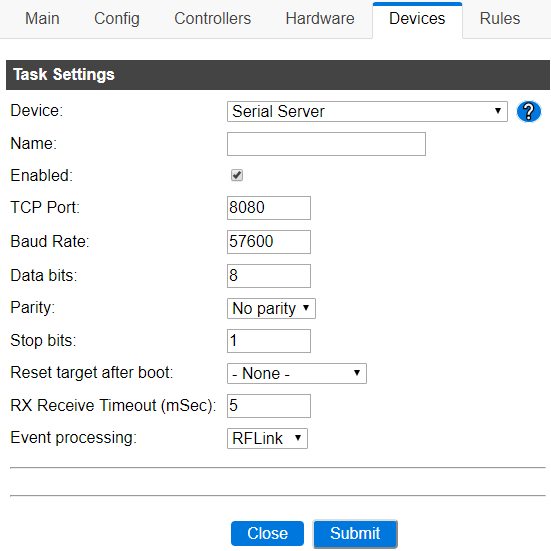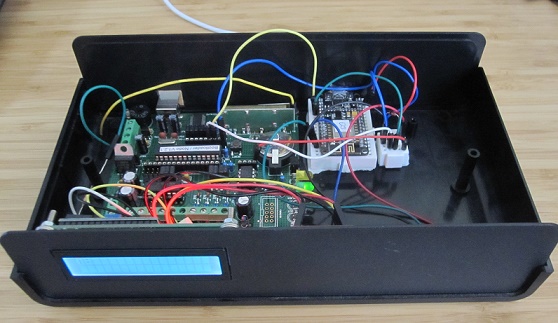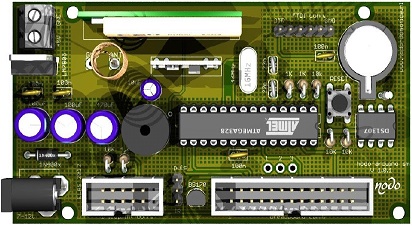Difference between revisions of "User:Martinus/NodoSmallRevival"
| Line 21: | Line 21: | ||
The ESP Easy module has only the Serial Server configure to listen to the serial output from the RFLink module. While another server could connect to the Serial Server, it is not in use. | The ESP Easy module has only the Serial Server configure to listen to the serial output from the RFLink module. While another server could connect to the Serial Server, it is not in use. | ||
| + | [[file:User-Martinus_SerialRFLinkConfig.png]] | ||
| + | |||
The Serial Server creates events that can be handled within the rule engine. The SerialSend command from the plugin can control the RFLink module. | The Serial Server creates events that can be handled within the rule engine. The SerialSend command from the plugin can control the RFLink module. | ||
Revision as of 17:34, 21 October 2017
Nodo Small Revival
Introduction
Still have some old Nodo Small hardware laying around? And would like to integrate with more future proof communication and/or controllers?
I have converted my old Nodo Arduino board to a new controller that can still control several KAKU lights in a similar way that the Nodo used to do.
Hardware
- Nodo Arduino 1.6/1.7 or Nodo Small board like this:
- ESP8266 module
Software
- RFLink Small https://github.com/letscontrolit/RFLinkSmall
- ESP Easy
Configuration
The ESP Easy module has only the Serial Server configure to listen to the serial output from the RFLink module. While another server could connect to the Serial Server, it is not in use.

The Serial Server creates events that can be handled within the rule engine. The SerialSend command from the plugin can control the RFLink module.
Incoming events are to be treated as literal strings so these events are preceded with the '!' symbol. This means that the '=' symbol is ignored and the entire event can be used as a trigger.
This node mainly listens to Kaku transmitters (hand remote as well as PIR devices) and controls other Kaku receivers. Another ESP node outside sends data on outside lightstrength using global sync.
ESP Easy rules sample
// Control hallway lights, using Kaku PIR switch
on !RFLink#NewKaku;ID=01234567;SWITCH=a;CMD=ON; do
if [Lights#Hal]=1
timerSet 1,1
timerSet 2,600
timerSet 3,630
timerSet 4,660
endif
endon
on !RFLink#NewKaku;ID=01234567;SWITCH=a;CMD=OFF; do
if [Lights#Hal]=1
timerSet 2,60
timerSet 3,90
timerSet 4,120
endif
endon
// Using timers, gradually dim down the lights
on Rules#Timer=1 do
SerialSend 10;NewKaku;12345;2;8;
delay 500
SerialSend 10;NewKaku;12345;2;8;
delay 500
SerialSend 10;NewKaku;12345;2;8;
endon
on Rules#Timer=2 do SerialSend 10;NewKaku;12345;2;5;
on Rules#Timer=3 do SerialSend 10;NewKaku;12345;2;3;
on Rules#Timer=4 do SerialSend 10;NewKaku;12345;2;OFF;
// control outside lights based on ouside lights (global sync from another node)
on OutsideLDR#Lux<150 do // 800
if [Lights#Hal]=0
SerialSend 10;NewKaku;12344;2;ON;
SerialSend 10;NewKaku;12346;2;ON;
TaskValueSet 3,1,1
endif
endon
on OutsideLDR#Lux>200 do // 900
if [Lights#Hal]=1
SerialSend 10;NewKaku;12344;2;OFF;
SerialSend 10;NewKaku;12346;2;OFF;
TaskValueSet 3,1,0
endif
endon
on !RFLink#NewKaku;ID=01234568;SWITCH=2;CMD=ON; do
SerialSend 10;NewKaku;12347;2;ON;
SerialSend 10;NewKaku;12348;2;ON;
endon
on !RFLink#NewKaku;ID=01234568;SWITCH=2;CMD=OFF; do
SerialSend 10;NewKaku;12347;2;OFF;
SerialSend 10;NewKaku;12348;2;OFF;
endon

